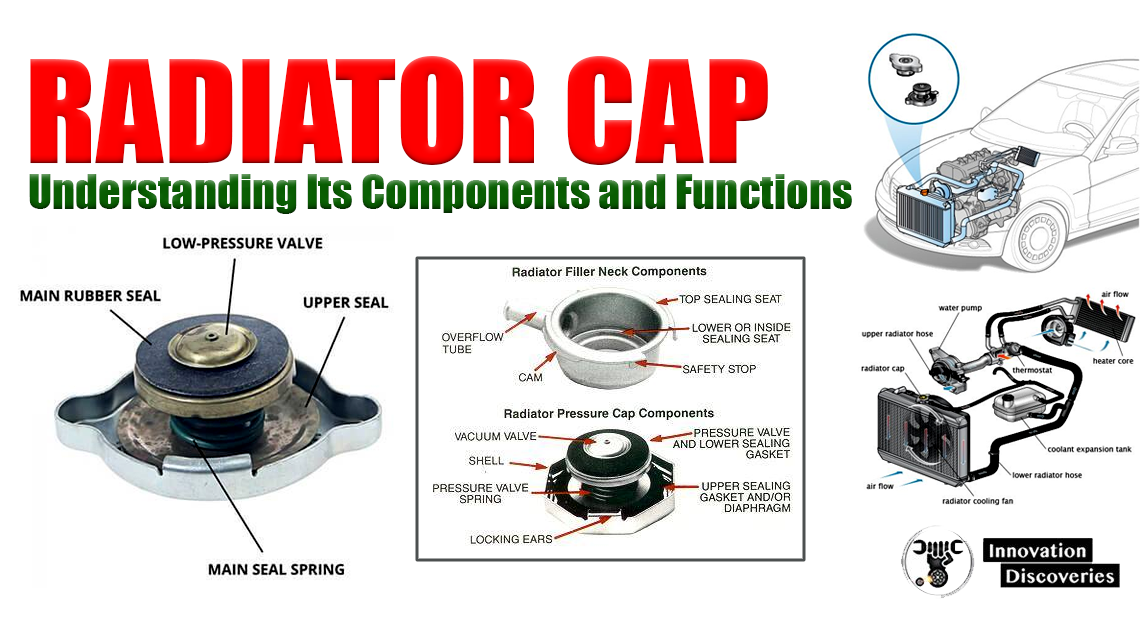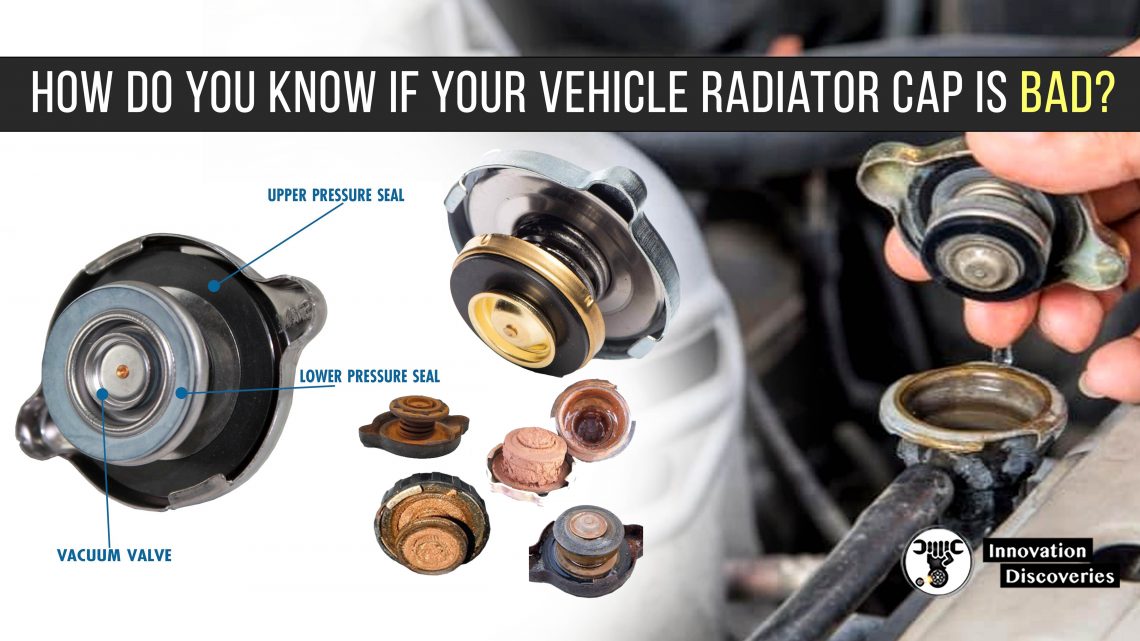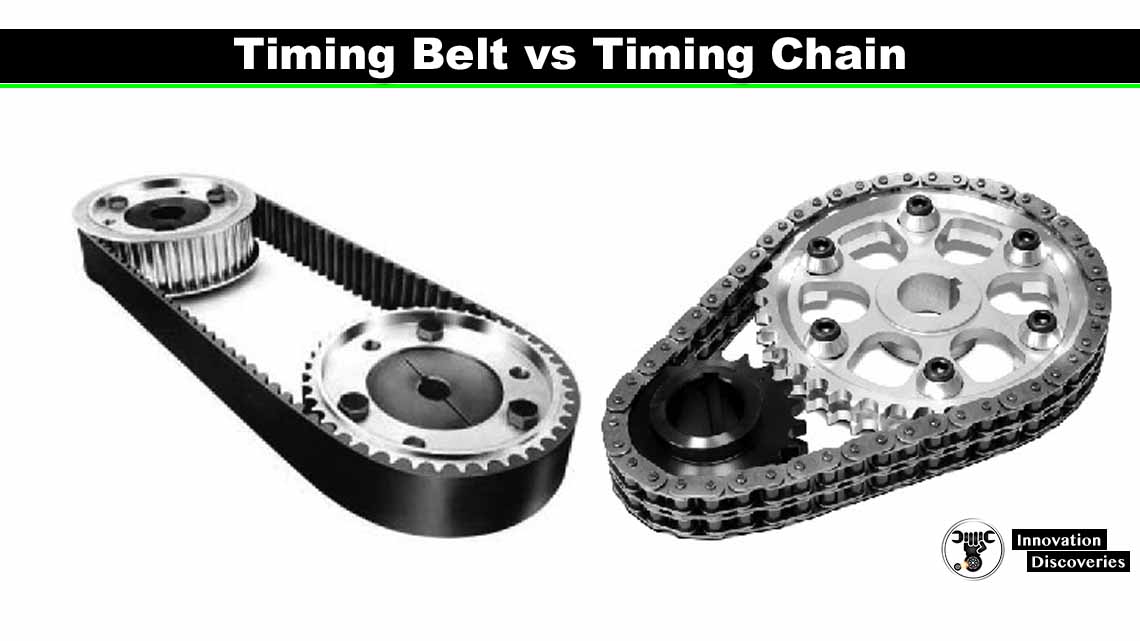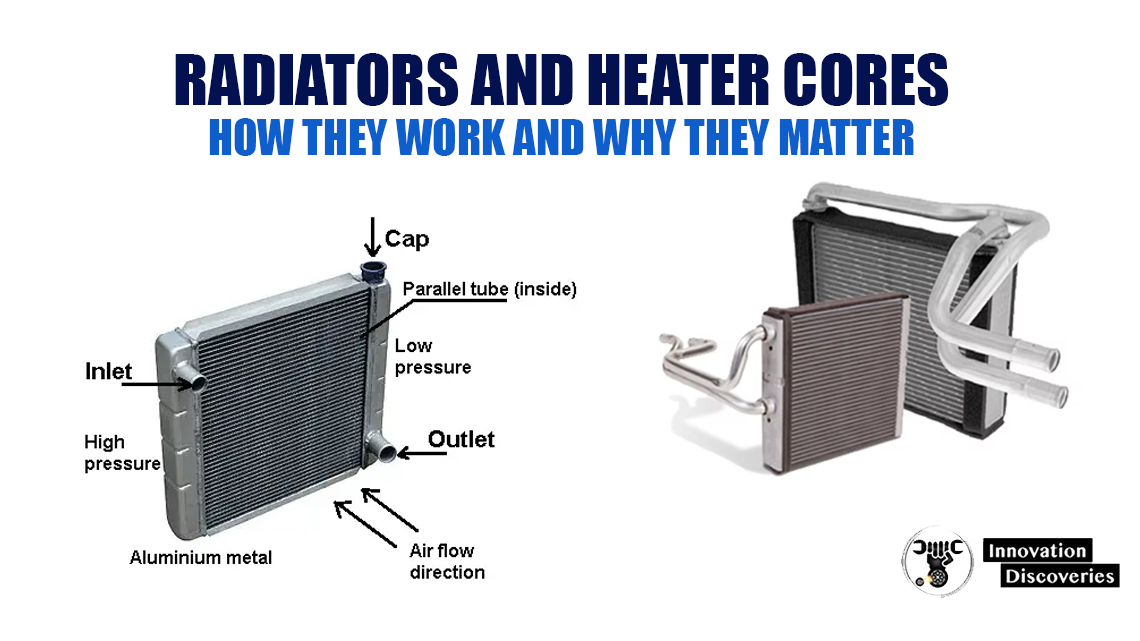
Modern vehicles rely on efficient cooling and heating systems to ensure engine performance and passenger comfort. Two essential components of these systems are the radiator and the heater core. Though they serve different purposes, both play a critical role in regulating temperature using coolant.
What Is a Radiator?
The radiator is a key part of a vehicle’s engine cooling system. Its primary job is to dissipate the heat absorbed by the coolant circulating through the engine.
How It Works:
- Coolant absorbs heat from the engine as it flows through it.
- The heated coolant then travels to the radiator.
- Inside the radiator, the coolant flows through thin tubes, and heat is transferred to the surrounding metal fins.
- Air passing through the radiator (thanks to vehicle motion or a cooling fan) removes the heat from the fins.
- The cooled fluid returns to the engine, and the cycle repeats.
Radiators are typically made from aluminum or copper for efficient heat transfer, and they may include one or more cooling fans to assist when the car is not moving fast enough to generate airflow.
What Is a Heater Core?
The heater core is part of the vehicle’s heating system, located inside the cabin behind the dashboard. It’s like a miniature radiator, but instead of releasing heat outside, it transfers heat into the cabin for passenger comfort.
How It Works:
- Hot coolant from the engine is directed to the heater core.
- A fan blows air over the heater core’s hot metal fins.
- The warm air is then directed through the vents into the passenger compartment.
The heater core not only keeps passengers warm but also plays a role in defrosting the windshield by blowing warm air onto the glass.
Common Problems and Symptoms
Radiator Issues:
- Overheating engine: Caused by clogs, leaks, or broken fans.
- Coolant leaks: Look for puddles under the vehicle or low coolant levels.
- Corrosion: Rust can block coolant flow.
Heater Core Issues:
- Foggy windows: If coolant leaks into the cabin, it can fog up the glass.
- Sweet smell inside: Coolant has a distinct sweet odor.
- Cold air from vents: A blocked or leaking heater core may prevent warm air from circulating.
- Coolant loss with no external leak: Might indicate a heater core leak into the cabin.
Maintenance Tips
- Regularly check coolant levels and top off with the correct mix.
- Flush the cooling system every 2–3 years to prevent corrosion and blockages.
- Inspect for leaks and fix small issues early before they lead to major repairs.
- Use quality coolant recommended by your vehicle manufacturer.
Conclusion
Both the radiator and heater core are vital to your vehicle’s performance and comfort. The radiator keeps your engine from overheating, while the heater core ensures your comfort during cold days. Understanding their functions and keeping them well-maintained can help you avoid costly repairs and stay safe on the road.
Discover More:
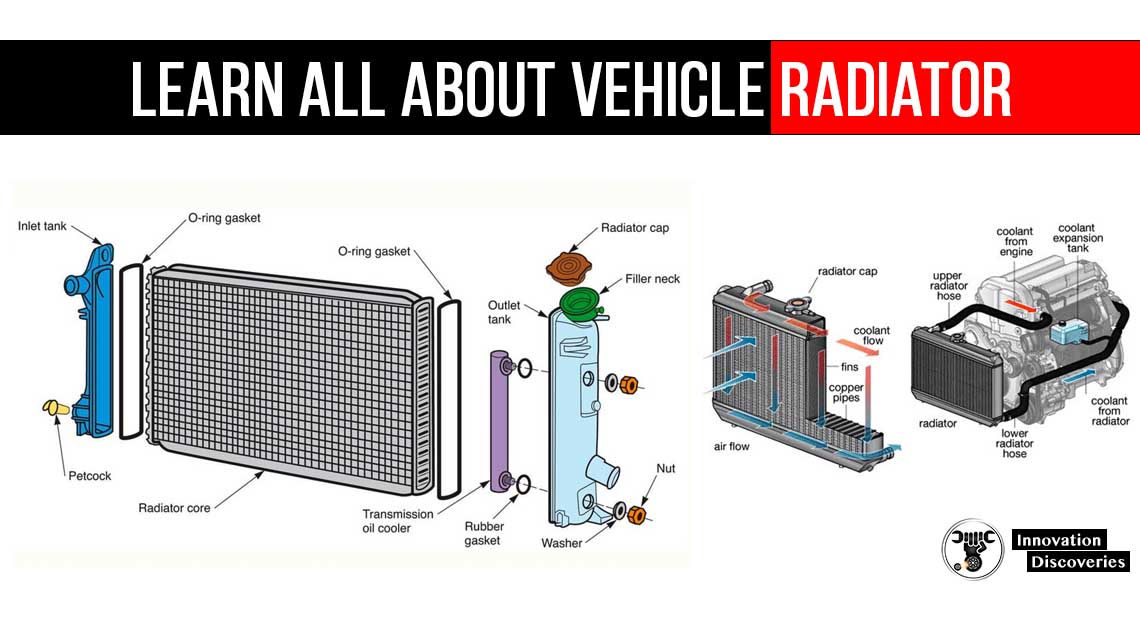
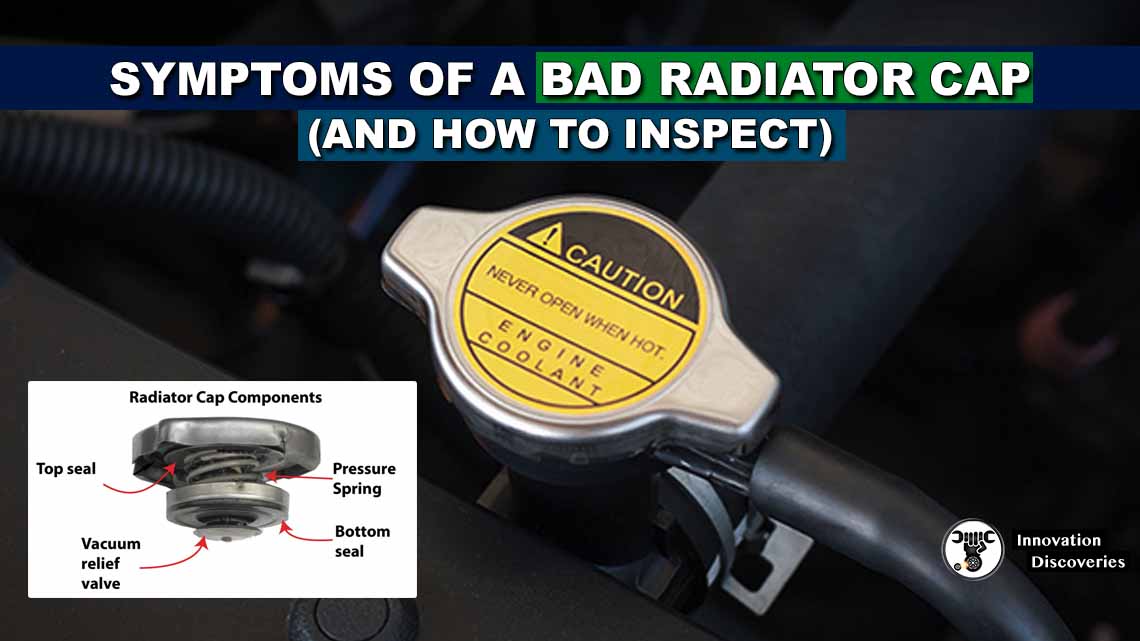
Read More:
- WORKING OF THERMOSTATS
- CAR THERMOSTAT FUNCTIONS, FAILURE SYMPTOMS, AND REPLACEMENT COST
- PISTON DAMAGE FROM OVERHEATING
- SYMPTOMS OF AN EXHAUST LEAK
- EXHAUST GAS RECIRCULATION (EGR)
- HOW AN ENGINE COOLING SYSTEM WORKS
- WATER COOLING VS AIR COOLING
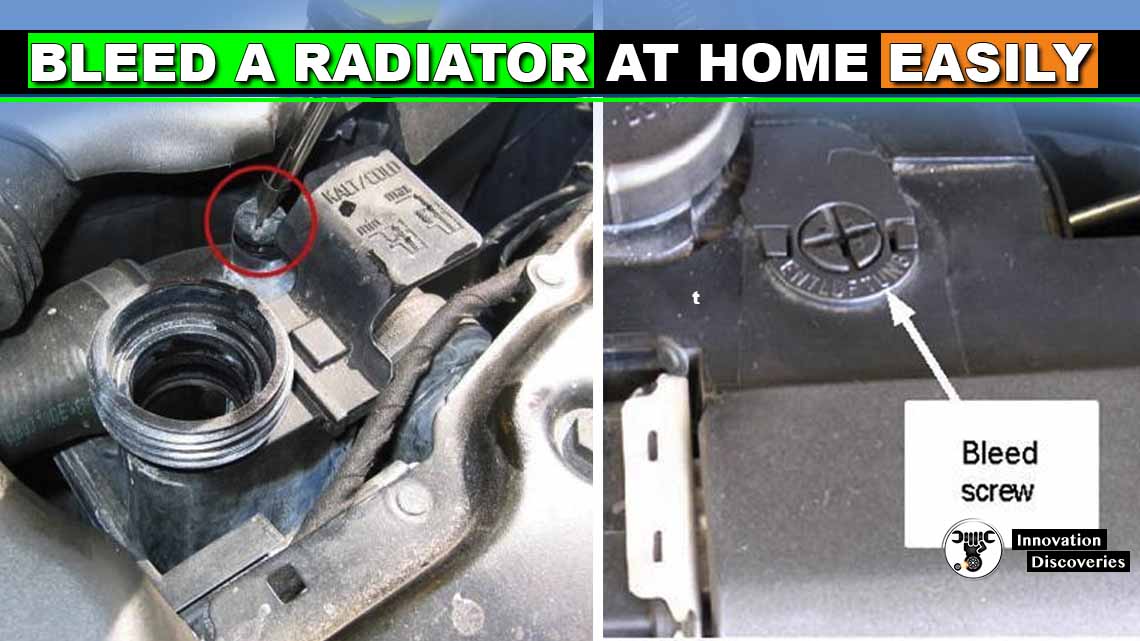
HOW TO APPLY A TEMPORARY REPAIR FOR UPPER RADIATOR HOSE?
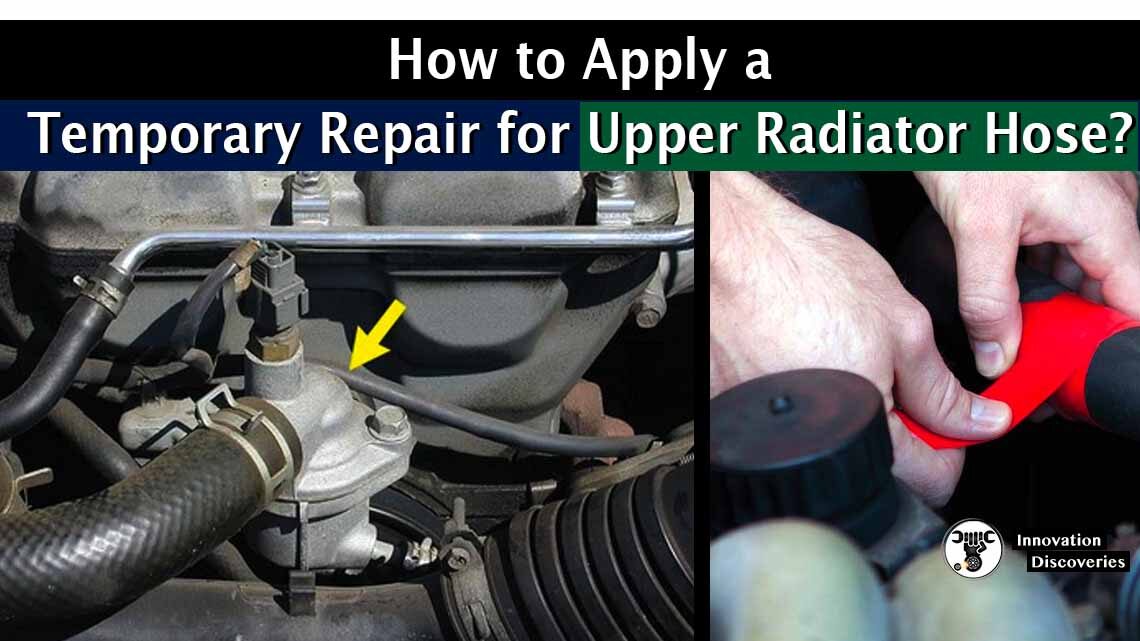
Visit Forum
Visit Our Friendly Website


